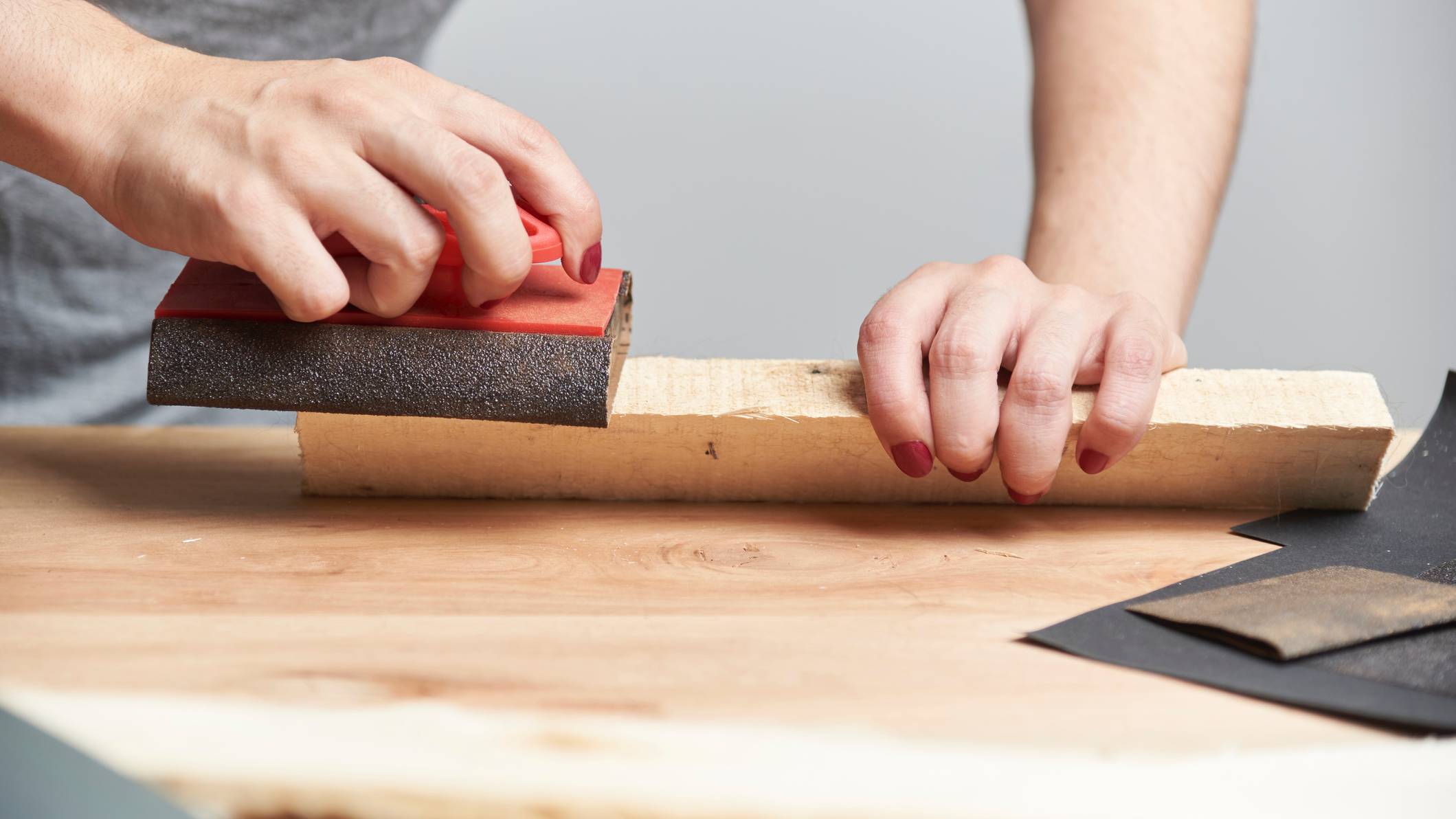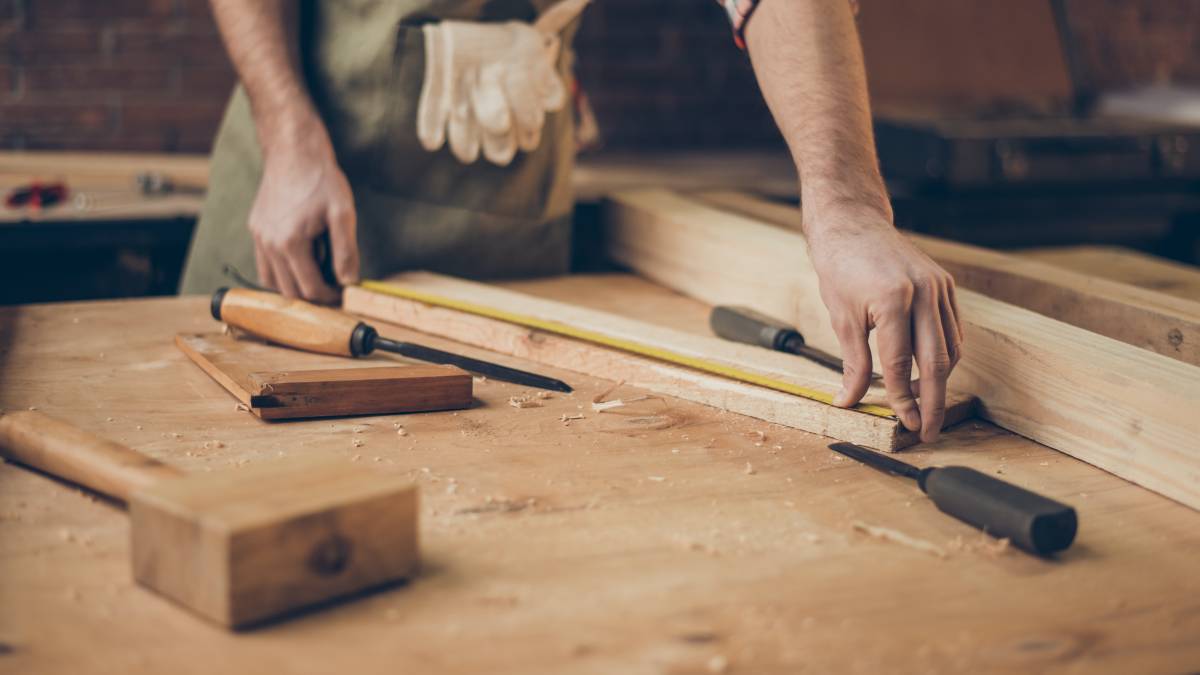
Wooden woes: How to remove glue from wood surfaces
Remove unwanted glue residue on wooden surfaces without causing damage.
Find a carpenterLast Updated on
What to know when removing glue from wood
- Test first. Test the method on a small spot first to ensure it will not leave a stain or damage on the wood.
- Wear gloves. It's better to be safe above all. Protect yourself from heat and other products using gloves and gloves, if necessary.
- Be patient. You might not remove the residue completely at first, so be ready to take some time and effort to repeat the process.
Working with glue is a great way to show both your creativity with craftsmanship. From making custom-made furniture to custom shelving, the possibilities are endless! However, it’s important to recognize that the occasional mishap, such as spills, excess adhesive, or glue stains on wooden surfaces, is bound to occur.
This guide aims to give you tips on how to remove wood glue effectively and without the stress and hassle.
Ways to remove glue from wood
If you’ve done some DIY custom shelving or wood staining and had some glue accidents, there are plenty of ways to fix those pesky blobs. The following techniques will guide you in safely and effectively removing glue from wood. So, let’s roll up our sleeves and get started!
Use vinegar as a natural remedy

If you’re looking for a natural alternative for how to remove glue from wood, trying out a vinegar solution to act as a glue remover for wood floors or surfaces is a good removal method to start. Not only is it easy to use, but it’s also convenient since most households have access to vinegar.
How to do it: Mix equal parts white vinegar and water, then apply the solution to the area affected by glue and let it sit for a few minutes. Once you’re done waiting, gently scrub the glue off the wooden surface using a sponge or soft cloth.
Rub the area with alcohol
With the help of a damp towel or piece of cloth, add rubbing alcohol and apply it to the glued area. The rubbing alcohol’s solvent properties come in handy to remove glue spills and accidents involving the adhesive residue.
Depending on the amount of glue and its type, you may need to repeat the process a few times. Always use fresh rubbing alcohol on a clean cloth.
How to do it: Dab the cloth onto the glue and wait a few minutes. The rubbing alcohol’s chemical makeup can dissolve and break down adhesives and sticky substances like glue. After a while, you should notice the glue softening and coming off.
Take advantage of heat

Using heat from a hair dryer, hot iron, or heat gun is a practical and effective method to remove glue from wood surfaces. Heat softens the adhesive, making it more pliable and easier to manipulate.
Before applying heat to the entire glued section, test first on a small, inconspicuous area of the wood to ensure it doesn’t cause damage or discoloration. Keep the heat source a few inches away from the glued area and set it to a low or medium heat setting.
How to do it: Use a rag to cover the area and run the hot iron on it. Move the heat source back and forth to distribute the heat evenly and prevent overheating in one spot. When the glue softens, gently and carefully scrape it off using a plastic scraper or an old credit card. Avoid using metal tools that could scratch the wood.
Grab your olive oil or cooking oil
Some oils, like olive or cooking oil, can be surprisingly effective if you struggle to remove superglue from wood surfaces. Like vinegar, it’s easily accessible and naturally gentle on wood. The oil works by breaking down the adhesive bonds of the glue, making it easier to lift and remove gently.
Place a cloth or paper towel under the glued area to catch any oil and loosened glue. Dip a corner of the soft cloth into the oil of your choice (olive oil or cooking oil). You don’t need a lot—just enough to dampen the cloth.
How to do it: Gently rub the dampened cloth onto the glue-covered area. Allow the oil to sit for a few minutes. The oil will soften the glue and weaken its bond with the wood. If needed, repeat until the glue has been fully removed. Once the glue is removed, dampen a clean cloth with warm water and wipe the area to remove any residual oil and glue.
Bring out the sandpaper for the stubborn blobs
If the glue has been left on its own for a while, you might be wondering how you can remove glue from wood. For these incidents, you can opt to try using sandpaper to get rid of dried or hardened glue.
Sandpaper is designed to be abrasive, making it a great alternative for removing glue from wood flooring. When glue has dried and formed a hard layer on the wood, sandpaper can help to break down this layer and gradually remove it.
How to do it: Choose sandpaper with an appropriate grit for the task. For removing glue, start with a finer grit, such as 120 or 150, to avoid excessive wood removal. You can gradually move to slightly coarse grits if the glue is particularly stubborn.
Gently sand the glued area using smooth, even strokes. Hold the sandpaper at a slight angle to the surface and move toward the wood grain. Remember not to apply excessive pressure since this can lead to uneven removal or damage.
Use commercial adhesive removers
When all else fails, go to a retail store and look for commercial adhesive removers. These specialized products, used for general carpentry work, are formulated to dissolve and break down adhesive bonds without harming the underlying wood–a convenient solution for removing glue from wood surfaces.
How to do it: Apply the adhesive remover directly onto the glue-covered area. Allow the remover to sit according to the product’s instructions. This gives it time to penetrate and dissolve the adhesive. If the residue remains after wiping away the adhesive remover, you can repeat it until it clears.
Remove stubborn glue residue easily
Regardless of whether you spilled glue or other sticky substances on your wooden floor, with the right knowledge and techniques at the ready, you can confidently navigate through these unexpected challenges and save your wooden surfaces from damage.
If you’re unsure if you can do it alone, you can contact a local cabinet maker for help or book an appointment with nearby carpenters and joiners! These professionals often handle adhesives and woodworking projects, so they shouldn’t have any problems taking care of glue accidents.
FAQs on removing glue from wood
When removing glue from hardwood floors or surfaces, it's essential to be cautious to prevent damaging the wood finish or causing discoloration. The best solvent to use depends on the type of glue you're dealing with and the finish of the wood.
Mineral spirits, rubbing alcohol, acetone, soap water, heat, and commercial adhesive removers are safe and effective alternatives to removing glue from wooden surfaces without compromising the wood’s quality and finish.
Yes, white vinegar can be effective in removing certain types of glue from wood surfaces. Vinegar's acidic properties can help break down and dissolve adhesive residues, making them easier to remove.
Yes, WD-40 can be used to remove wood glue from surfaces. It’s a versatile lubricant and cleaner that can help break down adhesives and make them easier to remove.
If glue residue is just one of your problems with your wood furniture, it might be best to call a carpenter to restore your furniture. Carpenters can repair cabinets and wooden seating, but the price depends on the job complexity. The average cost for wood repair may start from $110.
Find carpenters, fast
Find a carpenter
Related articles
Related guides





